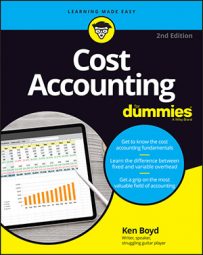Theoretical capacity assumes that nothing in your production ever goes wrong. Accountants describe this capacity as working at full efficiency all the time.
Consider what your pie-in-the-sky or perfect-world capacity would be. It’s a world in which everything runs perfectly and no machines or equipment ever break down. It’s utopia where no worker ever makes a mistake. That would be great, wouldn’t it? That’s theoretical capacity, and you can’t reach it. It seems silly, but you need to see this level of capacity to understand the others.
Say you own a business that makes athletic running shorts and other clothing. At maximum capacity, you can make 200 pairs of shorts per shift. You run three 8-hour shifts per day, 365 days a year. Based on those numbers, here is your theoretical capacity:
Theoretical capacity = shorts x shifts x 365 days
Theoretical capacity = 200 x 3 x 365 days
Theoretical capacity = 219,000Unfortunately, this level of capacity isn’t attainable. You need to take into account the unavoidable. That gets you to practical capacity.
Practical capacity is the level of capacity that includes unavoidable operating interruptions. Another description is unavoidable losses of operating time. Consider maintenance on equipment, employee vacations, and holidays. You’re willing to accept a good, rather than perfect, capacity level.
The people in your company can help you determine your practical capacity. Your production and engineering staff can answer questions about machine capacity and repair time. Your human resources staff can forecast employee availability, based on vacations and holidays.
You determine that 250 days is a more realistic number of production days, given unavoidable operating interruptions. Also, you decide that two shifts per day are realistic. Here’s the practical capacity calculation:
Practical capacity = shorts x shifts x days
Practical capacity = 200 x 2 x 250
Practical capacity = 100,000The practical capacity is 100,000 units (pairs of shorts) per year.

